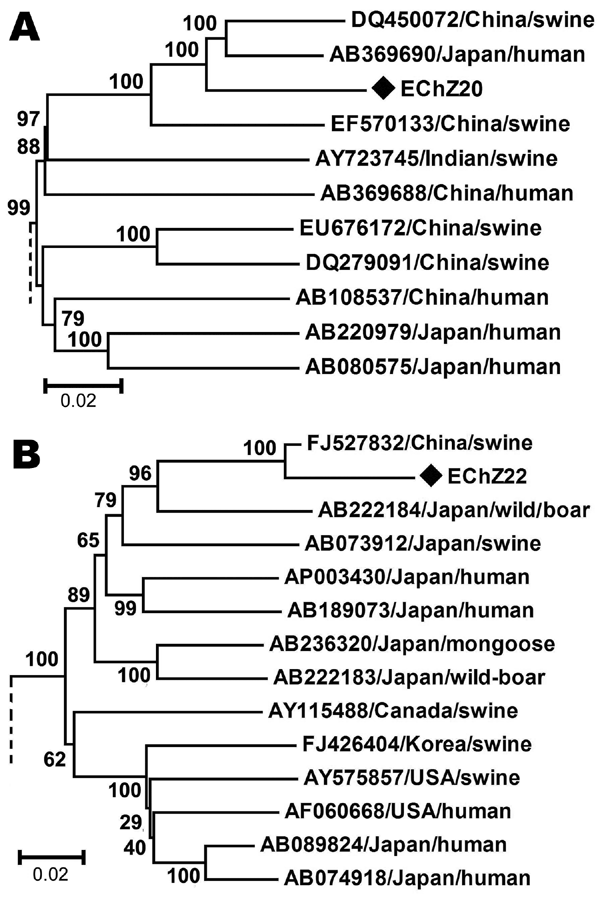Volume 16, Number 10—October 2010
Dispatch
Hepatitis E Virus Genotype Diversity in Eastern China
Figure 2

Figure 2. Phylogenetic tree showing alignment of the complete genome of EChZ20 of hepatitis E virus determined in the present study and the referenced genotype 4 isolates with complete genome available in GenBank (A), and the 1,681-nt partial open reading frame 2 sequence of EChN22 and referenced genotype 3 isolates with complete genome available in GenBank (B). The tree was constructed by using the neighbor-joining method and evaluated by using the interior branch test method with MEGA4 software (www.megasoftware.net). Percentage of bootstrap support is indicated at each node. GenBank accession number, source, and country of origin are indicated. Strains identified in this study are indicated by black diamonds. Only partial branches that were sufficient for elucidating the relationship between the study strains and their related strains are shown. Scale bars indicate nucleotide substitutions per site.